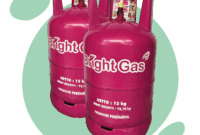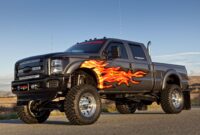Insurance for Log Trucks: Your Comprehensive Guide to Protecting Your Livelihood cars.truckstrend.com
The roar of a log truck engine, the scent of pine, and the vast expanse of the forest are the daily realities for those in the logging industry. It’s a demanding, vital, and often dangerous profession. Hauling timber, whether from the remote depths of a national forest or a private woodlot, involves navigating challenging terrain, managing heavy loads, and facing unpredictable road conditions. For every log truck owner and operator, the journey from forest to mill is fraught with potential risks, from minor fender-benders to catastrophic accidents involving immense loads of timber. This is where insurance for log trucks steps in, not merely as a legal requirement, but as the bedrock of financial security and operational continuity for your business.
Log truck insurance is a specialized form of commercial auto insurance designed to address the unique liabilities and physical damages associated with transporting logs and timber. Unlike standard commercial trucking insurance, it accounts for the specific risks of hauling an often-shifting, incredibly heavy, and high-value commodity. Without adequate coverage, a single incident could not only halt your operations but could also lead to devastating financial losses, putting your entire livelihood and future at risk. Understanding the intricacies of this essential protection is paramount for every log hauler.
Insurance for Log Trucks: Your Comprehensive Guide to Protecting Your Livelihood
Why Log Truck Insurance is Crucial: Beyond Compliance
While legal mandates require minimum liability coverage for commercial vehicles, the necessity of comprehensive insurance for log trucks extends far beyond simply checking a box. The nature of log hauling introduces a distinct set of vulnerabilities that demand tailored protection:
- High Accident Risk: Log trucks operate in challenging environments. Loading areas are often uneven and muddy. Roads to the mill can be winding, narrow, and unpaved. The sheer weight and momentum of a loaded log truck make accidents, when they occur, incredibly severe, leading to significant property damage, serious injuries, or even fatalities.
- Significant Asset Value: Log trucks and their specialized trailers (log trailers, lowboys, pole trailers) represent substantial investments, often hundreds of thousands of dollars. Physical damage coverage is vital to protect these assets from collision, fire, theft, or natural disasters.
- Valuable Cargo: The logs themselves, while seemingly basic, represent a considerable financial value. If logs are lost, damaged, or spilled due due to an accident, the financial impact can be substantial, leading to loss of revenue and potential penalties.
- High Liability Exposure: Due to their size, weight, and the nature of their cargo, log trucks pose a considerable risk to other motorists and property. In the event of an accident, third-party bodily injury and property damage claims can run into the millions, making robust liability coverage non-negotiable.
- Regulatory Compliance: The logging and trucking industries are heavily regulated. Specific insurance requirements may vary by state and even by the type of timber being hauled (e.g., raw timber vs. finished lumber). Adhering to these regulations is crucial to avoid hefty fines, operational shutdowns, and legal complications.
![]()
In essence, insurance for log trucks acts as a robust financial shield, safeguarding your business from the inherent risks of the road, the forest, and the heavy loads you carry, ensuring that a single mishap doesn’t derail your entire operation.
Key Types of Coverage for Log Trucks
A robust log truck insurance policy is a mosaic of different coverage types, each addressing a specific facet of risk. Understanding these components is the first step to building a policy that truly protects your interests:
-
Primary Liability Coverage: This is the cornerstone of any commercial auto policy. It covers damages to other people or property if your truck is at fault in an accident.
- Bodily Injury Liability: Pays for medical expenses, lost wages, and pain and suffering for those injured in an accident you cause.
- Property Damage Liability: Covers the cost to repair or replace property (vehicles, buildings, guardrails) damaged in an accident you cause.
- Importance for Log Trucks: Given the potential for severe damage from a heavy log truck, high liability limits (often $1,000,000 or more) are standard and highly recommended.

-
Physical Damage Coverage: Protects your truck and trailer itself.
- Collision Coverage: Pays for repairs or replacement of your truck if it’s damaged in a collision with another vehicle or object (e.g., hitting a tree, rolling over).
- Comprehensive Coverage: Protects your truck from non-collision incidents such as fire, theft, vandalism, falling objects (like trees!), natural disasters (hail, floods), and animal strikes.
- Importance for Log Trucks: Log trucks operate in harsh environments where incidents like rollovers on rough terrain or damage from falling debris are common. This coverage is vital to protect your significant investment.
-
Cargo Coverage (Log-Specific): This is arguably the most critical and specialized coverage for log haulers. It protects the logs themselves from loss or damage due to perils such as collision, overturning, fire, or theft while in transit.
- Importance for Log Trucks: Unlike general freight, logs can be particularly vulnerable to shifting, spilling, or becoming damaged on rough roads. This coverage ensures that the value of your load is protected, preventing significant financial loss if an incident occurs. Be sure to specify the type of timber and its value.
-
Uninsured/Underinsured Motorist (UM/UIM) Coverage: Protects you and your passengers if you are involved in an accident with a driver who either has no insurance or insufficient insurance to cover the damages they cause.
- Importance for Log Trucks: While you might be operating a large vehicle, you can still incur significant losses from an at-fault uninsured driver.
-
Non-Trucking Liability (Bobtail) Coverage: Provides liability coverage when your truck is operating without a load and not under dispatch (e.g., driving home after dropping off a load).
- Importance for Log Trucks: Many owner-operators lease their trucks to carriers. This coverage bridges the gap when your primary liability from the carrier isn’t active.
-
General Liability Coverage: While not directly truck insurance, this covers broader business risks, such as slips and falls at your business premises, or damage caused by your operations away from the road (e.g., if your crew accidentally damages property while loading logs).
-
Workers’ Compensation: If you have employees, this is mandatory in most states and covers medical expenses and lost wages for employees injured on the job.

Factors Influencing Log Truck Insurance Costs
The cost of insurance for log trucks is not static; it’s a dynamic figure influenced by numerous variables. Understanding these factors can help you anticipate costs and identify areas for potential savings:
- Driving Record & Experience: The cleaner your driving record (fewer accidents, violations), the lower your premiums. Experienced drivers generally pay less than new entrants.
- Truck Specifications: The age, make, model, gross vehicle weight (GVW), and value of your log truck and trailer significantly impact physical damage premiums. Newer, more expensive trucks cost more to insure.
- Operating Radius & Routes: Driving long distances, through dense urban areas, or on particularly hazardous logging roads will typically result in higher premiums than operating locally on well-maintained routes.
- Type of Logs Hauled: The value and specific risks associated with different types of timber (e.g., pulpwood vs. high-value specialty timber) can affect cargo insurance costs.
- Claims History: A history of frequent or large claims will invariably lead to higher premiums. Insurers view past claims as an indicator of future risk.
- Deductibles: Choosing a higher deductible (the amount you pay out-of-pocket before insurance kicks in) will lower your premium, but means greater out-of-pocket expense in the event of a claim.
- Geographic Location: State-specific regulations, local accident rates, and population density all play a role. Insurance costs can vary significantly from one state or region to another.
- Safety Measures: Installing safety features like GPS tracking, dash cameras, collision avoidance systems, and robust maintenance programs can sometimes lead to discounts.
Tips for Securing the Best Log Truck Insurance
Navigating the complexities of insurance for log trucks can be daunting, but with a strategic approach, you can secure comprehensive coverage at a competitive price:
- Shop Around Extensively: Don’t settle for the first quote. Obtain quotes from multiple insurance carriers. Rates can vary significantly, even for the same coverage.
- Work with a Specialized Agent: General insurance agents might not understand the nuances of log trucking. Seek out an insurance agent or broker who specializes in commercial trucking or, ideally, the logging industry. They will have access to niche carriers and a deeper understanding of your specific risks.
- Maintain a Clean Driving Record: This is the single most impactful factor for reducing your premiums. Encourage all your drivers (and yourself) to practice defensive driving and avoid violations.
- Implement Robust Safety Protocols: Beyond just good driving, invest in regular vehicle maintenance, driver training programs, and consider safety technology. Documenting these efforts can sometimes lead to discounts.
- Consider Higher Deductibles: If you have sufficient cash reserves, opting for a higher deductible can significantly lower your annual premiums. Just ensure you can comfortably afford the deductible if a claim arises.
- Bundle Policies: If you need other business insurance (general liability, property insurance for your office/yard), inquire about bundling them with your truck insurance for potential multi-policy discounts.
- Understand Policy Exclusions: Always read the fine print. Know what your policy doesn’t cover. For example, some cargo policies might exclude specific types of damage or situations.
- Regularly Review Your Policy: Your business changes, and so do market conditions. Review your policy annually with your agent to ensure it still meets your needs and to explore new discount opportunities.
The Claims Process: What to Do When Disaster Strikes
Even with the best preparation, accidents can happen. Knowing how to handle a claim efficiently can significantly impact the outcome and minimize disruption to your business:
- Prioritize Safety & Seek Medical Attention: First and foremost, ensure the safety of all involved. If there are injuries, call 911 immediately.
- Secure the Scene & Notify Authorities: If possible and safe, move your truck to a safe location. Notify law enforcement and ensure an official accident report is filed.
- Document Everything: Take photos and videos of the accident scene, vehicle damage, log spillage, road conditions, and any relevant details. Collect contact information from all parties involved (drivers, witnesses) and their insurance details.
- Do NOT Admit Fault: Stick to the facts. Do not apologize or admit fault at the scene, as this can complicate your claim.
- Notify Your Insurer Promptly: Report the incident to your insurance agent or carrier as soon as possible. The sooner they are aware, the quicker they can begin the claims process.
- Cooperate Fully: Provide all requested documentation and information to your adjuster. Be honest and thorough.
- Keep Detailed Records: Maintain a file of all communications, documents, and expenses related to the claim.
Challenges and Solutions in Log Truck Insurance
The logging industry presents unique insurance challenges, but with the right approach, solutions are available:
- High Premiums: Due to the inherent risks, log truck insurance premiums are generally higher than for many other commercial vehicles.
- Solution: Focus on risk management (safety, maintenance), work with a specialist broker to access niche markets, and explore higher deductibles.
- Limited Carriers: Not all commercial auto insurers offer coverage for log trucks due to the specialized nature and risk.
- Solution: This reinforces the need for a specialized agent who knows which carriers operate in this space and can shop the market for you.
- Specific Endorsements Needed: Policies must often be customized with endorsements for specific operations, like loading/unloading coverage for cargo.
- Solution: Work closely with your agent to ensure all your unique operational risks are explicitly covered.
- Navigating Complex Policies: The terminology and structure of commercial insurance policies can be overwhelming.
- Solution: Don’t hesitate to ask your agent to explain any part of your policy you don’t understand. A good agent will simplify complex terms.
Estimated Annual Cost Table for Log Truck Insurance
Please note: These figures are estimates only and can vary wildly based on the factors discussed above (driver history, location, truck value, specific operations, chosen deductibles, and current market conditions). They are provided to give a general idea of potential ranges. Actual quotes will require detailed information about your specific operation.
| Coverage Type | Typical Annual Range (Low) | Typical Annual Range (High) | Key Benefit |
|---|---|---|---|
| Primary Liability | $8,000 | $25,000+ | Covers bodily injury and property damage to third parties if you are at fault. Essential and legally required. |
| Physical Damage (Collision) | $2,500 | $10,000+ | Covers damage to your own truck and trailer from collisions. Varies by truck value and deductible. |
| Physical Damage (Comprehensive) | $1,000 | $4,000+ | Covers damage to your own truck and trailer from non-collision incidents (fire, theft, vandalism, falling objects, natural disasters). |
| Cargo Coverage | $1,500 | $7,000+ | Protects the value of the logs/timber being hauled from loss or damage due to covered perils. Critical for log haulers. |
| Non-Trucking Liability | $500 | $1,500 | Provides liability coverage when your truck is operating without a load and not under dispatch. |
| Uninsured/Underinsured Motorist | $300 | $1,000 | Protects you if you’re hit by a driver with no or insufficient insurance. |
| General Liability | $1,000 | $3,500+ | Covers broader business risks not directly related to vehicle operation (e.g., premises liability). |
| Average Total Annual Cost | $15,000 | $50,000+ | This is a very broad average and highly dependent on all factors mentioned. |
Frequently Asked Questions (FAQ) About Log Truck Insurance
Q1: Is log truck insurance more expensive than general commercial truck insurance?
A1: Generally, yes. Due to the higher risks associated with hauling heavy, shifting loads over challenging terrain, and the potential for severe accidents, log truck insurance premiums tend to be higher than those for many other types of commercial trucking.
Q2: Do I need separate cargo insurance for logs, or is it included?
A2: Cargo insurance specifically for logs is crucial and often a separate or specialized add-on (endorsement) to a standard commercial auto policy. It’s vital to ensure your policy explicitly covers the specific type and value of timber you haul, as general cargo coverage might not suffice.
Q3: Can I get discounts for having a good safety record or using safety technology?
A3: Absolutely. Many insurers offer discounts for drivers with clean MVRs (Motor Vehicle Records), implementing regular safety training, and utilizing technology like dash cams, GPS tracking, and collision avoidance systems. Always ask your agent about available discounts.
Q4: What’s the difference between "bobtail" and "non-trucking liability" coverage?
A4: These terms are often used interchangeably. Both provide liability coverage when your truck is operating without a load and not under dispatch (e.g., driving to a repair shop or home). It’s essential for owner-operators who are leased to a motor carrier, as the carrier’s primary liability often only covers you when you’re under dispatch.
Q5: What happens if my logs spill or are damaged during transport?
A5: This is precisely what cargo coverage is for. If your logs are lost, damaged, or spilled due to a covered peril (like an accident or overturn), your cargo insurance would typically cover the financial loss of the timber.
Q6: How often should I review my log truck insurance policy?
A6: It’s highly recommended to review your policy annually with your insurance agent. This ensures your coverage still meets your evolving business needs, accounts for any changes in your operations, and allows you to explore new discounts or adjustments.
Conclusion
Insurance for log trucks is far more than a mere formality; it is the vital shield that protects your significant investment, your livelihood, and your peace of mind in a demanding industry. From the moment your wheels touch the rough terrain of a logging site to the final delivery at the mill, the risks are ever-present. By understanding the essential coverages, recognizing the factors that influence costs, and employing smart strategies to secure the best policy, you can ensure that your operation is robustly protected against the unpredictable nature of the road and the forest. Don’t leave your future to chance; invest wisely in comprehensive log truck insurance and drive forward with confidence.




